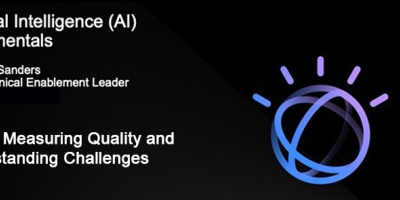Data storage and retrieval has always been an essential part of business computing, but it's one of the few aspects of digital life that's unrelentingly more important than ever. The growth of cloud storage options has been a major result of this constant, not-always-so-gentle pressure.
In the approximately 60 years that people have been striving to make computers serve business needs, the amount of change that evolution has brought to commercial activity is probably no longer comprehensible by any single person. For most of us, it seems sufficient to say, "Wow, a lot has happened since JFK's day," without thinking about it too closely (assuming, of course, that you're even old enough to remember JFK). Despite all the changes in technology and business since then, though, the need for more data and the impact of using it effectively on business practices has never been more important than it is now. What's more, this importance of data looks like it's become a truism that will be the hallmark of business computing more or less forever. In a world that changes as fast as ours does, it almost seems counterintuitive that there's any aspect of computing that could be considered everlasting. And yet, this is.
Big Data and artificial intelligence (AI) are lifting concerns about the efficiency and cost of storing data to new heights and seem poised to be significant drivers of storage advances in the coming years. The 2020s seem primed to be a decade in which cloud storage will become an established requirement for business rather than something relatively new and debatable. (Or at least until some kind of chronic disruption of the Internet drives us back to hardwired, hardened data bunkers hidden under the CEO's parking spot, but that's a crisis for another decade.) In short, cloud storage seems destined to be with us for a while, and as such, starting in 2021, MC Press Online will be giving this technology and its issues more exposure.
The Digital Filing Cabinet
Briefly, there are four major types of computing clouds and three major types of related service solutions.
Types of Clouds
A private cloud refers to an infrastructure that is mainly dedicated to one business entity, resides behind that entity's firewall, is usually located in the same building as the owning entity or in a data center nearby, and is connected by a LAN, WAN, VPN, or the Internet. The data center is likely managed by the owning entity's IT department and is isolated from outside systems. While this arrangement is considered somewhat old-school, it has the advantage of the system remaining totally under the owning entity's control. Two big disadvantages are that the owner has to administer the system and fix problems if anything goes wrong. Other downsides are that private clouds generally cost more because of maintenance expenses (e.g., staff salaries, power, and cooling facilities), the service may end up being underused, and timing of capital outlays for additional storage when needed may be inconvenient enough that a storage shortage may occur.
Public clouds are configurations provided by a third-party infrastructure under contract. This includes major service providers like Amazon Web Service (AWS), Google Cloud, IBM Cloud, and others. Although originally a public cloud meant using a physical infrastructure owned by some other company that is located elsewhere geographically, public clouds now include management of an onsite infrastructure by offsite service providers. This management can be termed a "managed private cloud" or a "dedicated public cloud." The advantage of this type of cloud is that tasks such as maintenance, service duties, upgrades, and provisioning are someone else's headache other than the client company IT department's. Associated fees, at least, are usually based on charging for resources your enterprise actually uses rather than resources to which it simply has access. A main disadvantage of public clouds is that problems are fixed on the service provider's schedule, and any given client is not necessarily first priority. Another is that unless an entity has a "dedicated" public cloud, the enterprise is sharing resources with an unknown number of other service-provider clients whose problems could conceivably affect those shared resources at some time.
Hybrid clouds are an amalgam of private and public, most commonly independent cloud systems that may combine private and public aspects, or be independently private or public. The main advantage is flexibility in changing arrangements to better suit specific enterprise needs. Another is better security, because hybrid arrangements by their nature are more detailed, leaving room for greater means and negotiation on how data is protected. The main disadvantage is the same as with public clouds, the lack of total control. Other drawbacks include balancing where to store data as opposed to where apps may be stored, maintaining sufficient data security, and frequently high initial startup costs.
Multicloud refers to mixing and matching not only cloud service types but usually cloud service providers as well. Protecting sensitive data is the main draw here, enabling particularly confidential information to be stored in one kind of cloud (e.g., a private, local one) while other less-critical data is entrusted to a different configuration, if not a different service provider. The main drawback is the complexity of administering a system that may involve multiple service providers and storage methods for different aspects of data and apps.
Internet Storage Service Types
The three types of cloud services are Software as a Service (SaaS), Infrastructure as a Service (IaaS), and Platform as a Service (PaaS).
SaaS is perhaps the oldest configuration, under which software provided by a third party is managed by that third party, either remotely on a client company's own systems, or via the cloud on the provider's system. The main advantages, particularly over the old model of buying an app and then paying for periodic software upgrades, is that the software is maintained by the people who know it best, and the service usually includes upgrades to the latest and greatest software versions as they become available.
IaaS is the most common service configuration for cloud today. All the hardware is managed by a third party via the Internet, while applications and the user interface part are managed by the client company. As mentioned, the client has fewer responsibilities and less control.
PaaS is a combination of SaaS and IaaS, under which the service provider manages both the hardware and software environment for the client company. Depending on the service contract, the client company may have some software-related responsibilities, but otherwise the service provider carries the ball on every play.
Even IBM Gets It
IBM, in its magnificent ponderousness, has seen the significance of the coming shift to cloud. The growth of cloud storage, the need for it to be more responsive, and the money to be made from doing that successfully are IBM's public motivation for its October-announced plan to spin off its Managed Infrastructure Services unit by the end of this year into an independent entity. The still-unnamed new corporation, drolly labeled "NewCo" (by the IBM Humor Department, apparently), will specialize in streamlining and administering their clients' storage and computing infrastructures operating over the Internet or VPNs, which IBM estimated in the initial press release about the spinoff to be a $500 billion market. The result will be two independent IBM entities, the old IBM focusing on being a hybrid cloud and AI company and NewCo converging on being an infrastructure services provider.
The role of Power Systems in the non-NewCo part of IBM is still indeterminate. (MC Press Online contacted IBM for more details on the change, but IBM declined to comment further beyond its October press release.)
One important motivator for IBM's announced action is its July 2019 acquisition of Red Hat. The two companies had cooperated for two decades on creating hybrid-cloud environments for their customers, but the merger is seen as opening wider a door to providing distributed cloud environments to client companies seeking to move applications, data, and workloads across multiple environments as enterprise needs demand. Red Hat's existing partnerships with AWS and other major cloud providers at the time of the merger will also help IBM further penetrate the client services market.
Another spur to the change is reducing IBM's costs. For several years, Managed Infrastructure Services has been part of an overall downsizing of its parent IBM division, Global Technology Services, primarily made by closing offices in high-expense cities and moving some employees to locations where wages tend to be lower.
Mixing and Matching Cloud Service Types
If your enterprise isn't already using some kind of cloud service provider but you're thinking about doing it, much of the advice available online urges initially paying less attention to cost and more to function. That's to say the question of how you want to use data storage and other computing resources should have priority over a provider's brand name or other considerations.
For example, if security is paramount for some data, a private cloud, or a hybrid cloud or multicloud environment with a private option is best for anything really sensitive or of competitive advantage. On the other hand, if the main use for a cloud system is to handle high-volume transactions (or transaction volume that varies unpredictably), the pay-for-what-you-use model of the public cloud is probably what you'd be better off investigating first. If flexibility in where you run certain apps or workloads is of most utility, maintaining business continuity, or if you have some kind of unusual need, the hybrid model generally provides more options for doing those. Hybrid also looks to eventually become the most common type of cloud service provision, so it will not only be more mainstream but more likely to develop a greater range of custom applications that are tailorable to your situation more quickly.
Also important to consider are whether or not your enterprise has one or more critical applications that might run best on the cloud (e.g., if you need to support multiple user locations), the volume of storage you expect to need in the next time period, and whether or not there is data involved to which you might want to maximize customer access. Another consideration could be how much of a response lag you're willing to accept when users or customers try to access data and applications.
A Springboard to More Advanced Technologies
Using Big Data and AI to analyze large volumes of information about markets and customers are technologies that are growing in importance to many enterprises' commercial success. Cloud storage for data and apps dovetails with these rising business methods, both of which require more storage than conventional apps and data traditionally require. Ignoring this trend, particularly for medium and large businesses, represents a risk that is gradually becoming less and less acceptable. Embracing change is a fact of life from which no IT department can afford to turn away, and cloud storage is yet another example of this trend.























 More than ever, there is a demand for IT to deliver innovation. Your IBM i has been an essential part of your business operations for years. However, your organization may struggle to maintain the current system and implement new projects. The thousands of customers we've worked with and surveyed state that expectations regarding the digital footprint and vision of the company are not aligned with the current IT environment.
More than ever, there is a demand for IT to deliver innovation. Your IBM i has been an essential part of your business operations for years. However, your organization may struggle to maintain the current system and implement new projects. The thousands of customers we've worked with and surveyed state that expectations regarding the digital footprint and vision of the company are not aligned with the current IT environment. TRY the one package that solves all your document design and printing challenges on all your platforms. Produce bar code labels, electronic forms, ad hoc reports, and RFID tags – without programming! MarkMagic is the only document design and print solution that combines report writing, WYSIWYG label and forms design, and conditional printing in one integrated product. Make sure your data survives when catastrophe hits. Request your trial now! Request Now.
TRY the one package that solves all your document design and printing challenges on all your platforms. Produce bar code labels, electronic forms, ad hoc reports, and RFID tags – without programming! MarkMagic is the only document design and print solution that combines report writing, WYSIWYG label and forms design, and conditional printing in one integrated product. Make sure your data survives when catastrophe hits. Request your trial now! Request Now. Forms of ransomware has been around for over 30 years, and with more and more organizations suffering attacks each year, it continues to endure. What has made ransomware such a durable threat and what is the best way to combat it? In order to prevent ransomware, organizations must first understand how it works.
Forms of ransomware has been around for over 30 years, and with more and more organizations suffering attacks each year, it continues to endure. What has made ransomware such a durable threat and what is the best way to combat it? In order to prevent ransomware, organizations must first understand how it works. Disaster protection is vital to every business. Yet, it often consists of patched together procedures that are prone to error. From automatic backups to data encryption to media management, Robot automates the routine (yet often complex) tasks of iSeries backup and recovery, saving you time and money and making the process safer and more reliable. Automate your backups with the Robot Backup and Recovery Solution. Key features include:
Disaster protection is vital to every business. Yet, it often consists of patched together procedures that are prone to error. From automatic backups to data encryption to media management, Robot automates the routine (yet often complex) tasks of iSeries backup and recovery, saving you time and money and making the process safer and more reliable. Automate your backups with the Robot Backup and Recovery Solution. Key features include: Business users want new applications now. Market and regulatory pressures require faster application updates and delivery into production. Your IBM i developers may be approaching retirement, and you see no sure way to fill their positions with experienced developers. In addition, you may be caught between maintaining your existing applications and the uncertainty of moving to something new.
Business users want new applications now. Market and regulatory pressures require faster application updates and delivery into production. Your IBM i developers may be approaching retirement, and you see no sure way to fill their positions with experienced developers. In addition, you may be caught between maintaining your existing applications and the uncertainty of moving to something new. IT managers hoping to find new IBM i talent are discovering that the pool of experienced RPG programmers and operators or administrators with intimate knowledge of the operating system and the applications that run on it is small. This begs the question: How will you manage the platform that supports such a big part of your business? This guide offers strategies and software suggestions to help you plan IT staffing and resources and smooth the transition after your AS/400 talent retires. Read on to learn:
IT managers hoping to find new IBM i talent are discovering that the pool of experienced RPG programmers and operators or administrators with intimate knowledge of the operating system and the applications that run on it is small. This begs the question: How will you manage the platform that supports such a big part of your business? This guide offers strategies and software suggestions to help you plan IT staffing and resources and smooth the transition after your AS/400 talent retires. Read on to learn:
LATEST COMMENTS
MC Press Online